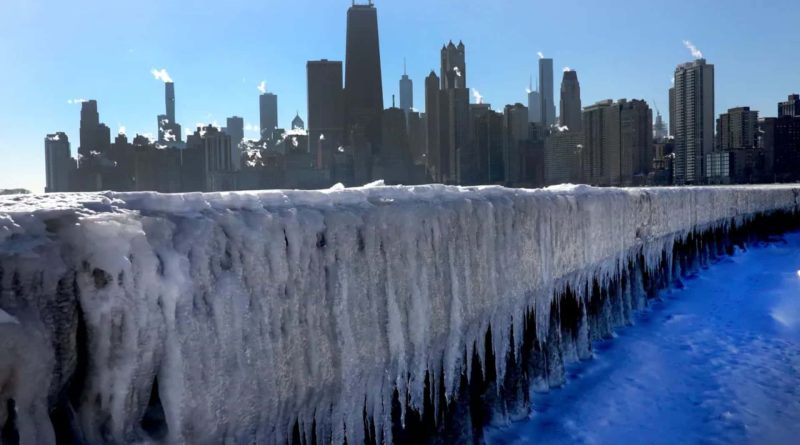Winter Research Expedition Delves into the Changing Dynamics of the Great Lakes
The face of winter is evolving across the Great Lakes region, prompting scientists to delve deeper into its implications.
What unfolds in the Great Lakes during the long, icy grasp of winter? To the casual onlooker, and perhaps even seasoned experts, the answer might seem elusive, “Not much.”
Traditionally, winter has been perceived as a time of subdued aquatic activity by lake scientists, with most field studies conducted during other seasons.
However, emerging perspectives suggest a more intricate interplay beneath the icy surface, potentially influenced by climate fluctuations. In a bid to unravel these mysteries, research teams are braving the frozen expanses of all five lakes this month to gather crucial data and insights.
“We’ve overlooked the significance of winter in the Great Lakes for far too long,” remarked Ted Ozersky, a lake biologist from the University of Minnesota Duluth, unveiling the “Winter Grab” expedition.
“There’s a plethora of ways in which ice and winter conditions can impact the ecosystem. While we have a theoretical grasp, empirical evidence is lacking in many aspects,” added Ozersky.
Teams comprising researchers from numerous U.S. and Canadian institutions will venture onto the frozen terrains of lakes Erie, Huron, Michigan, Ontario, and Superior during the week of February 14th, coinciding with peak ice coverage.
This midwinter expedition aims to capture a snapshot of critical parameters including light penetration, water dynamics, and the presence of vital elements such as carbon and nutrients, pivotal for sustaining aquatic life.
Casey Godwin, a biogeochemist from the University of Michigan, will focus on Lake Huron’s Saginaw Bay, an area grappling with phosphorus overload, which fuels harmful algae blooms akin to those in Lake Erie. Godwin’s endeavor seeks to fill the void in winter data, particularly concerning phosphorus dynamics.
Beyond the conventional understanding of algae blooms as a summer phenomenon, satellite imagery has detected their occurrence even during frigid spells in Lake Erie’s central basin, underscoring the need for comprehensive winter investigations.
The shifting dynamics of winter itself underscore the urgency of such research endeavors. With Great Lakes’ ice cover dwindling steadily since the 1970s, and projections hinting at its potential scarcity in the future, the ecological ramifications remain ambiguous.
“Ice exerts a profound influence on various aspects ranging from carbon dioxide exchange to light penetration and thermal stratification of the water column,” explained Ozersky. “Understanding these dynamics is imperative for gauging the available planktonic resources crucial for sustaining fish populations.”
Moreover, nearshore ice acts as a shield, safeguarding fish eggs and mitigating shoreline erosion caused by turbulent waves.
Despite its acknowledged significance, winter’s influence on the lakes remains underexplored, necessitating concerted research efforts.
Funded by the University of Michigan’s Cooperative Institute for Great Lakes Research, this month-long expedition seeks to address the dearth of winter data, especially pertinent in the context of climate change-induced alterations.
“Winter undergoes the most profound transformations under the influence of climate change,” remarked Marguerite Xenopoulos, an ecosystem ecologist from Trent University. Xenopoulos will lead sampling efforts in Lake Huron’s Georgian Bay and Lake Ontario’s Bay of Quinte during the expedition.
Employing a diverse array of transportation modes including snowmobiles, all-terrain vehicles, and icebreaking vessels, researchers will navigate the icy terrain, drilling through layers of ice to unveil the mysteries beneath.
While acknowledging the expedition’s inability to provide definitive answers, Ozersky remains optimistic about its potential to ignite further research initiatives. The establishment of the Great Lakes Winter Network underscores this commitment to sustained exploration and understanding.
Insights gleaned from these endeavors could inform pragmatic measures such as bolstering shoreline infrastructure and implementing winter cover crop strategies to mitigate adverse ecological impacts.
“As we unravel the mysteries of winter’s role in the Great Lakes, we hope to glean insights that can guide adaptive management strategies,” concluded Ozersky.

